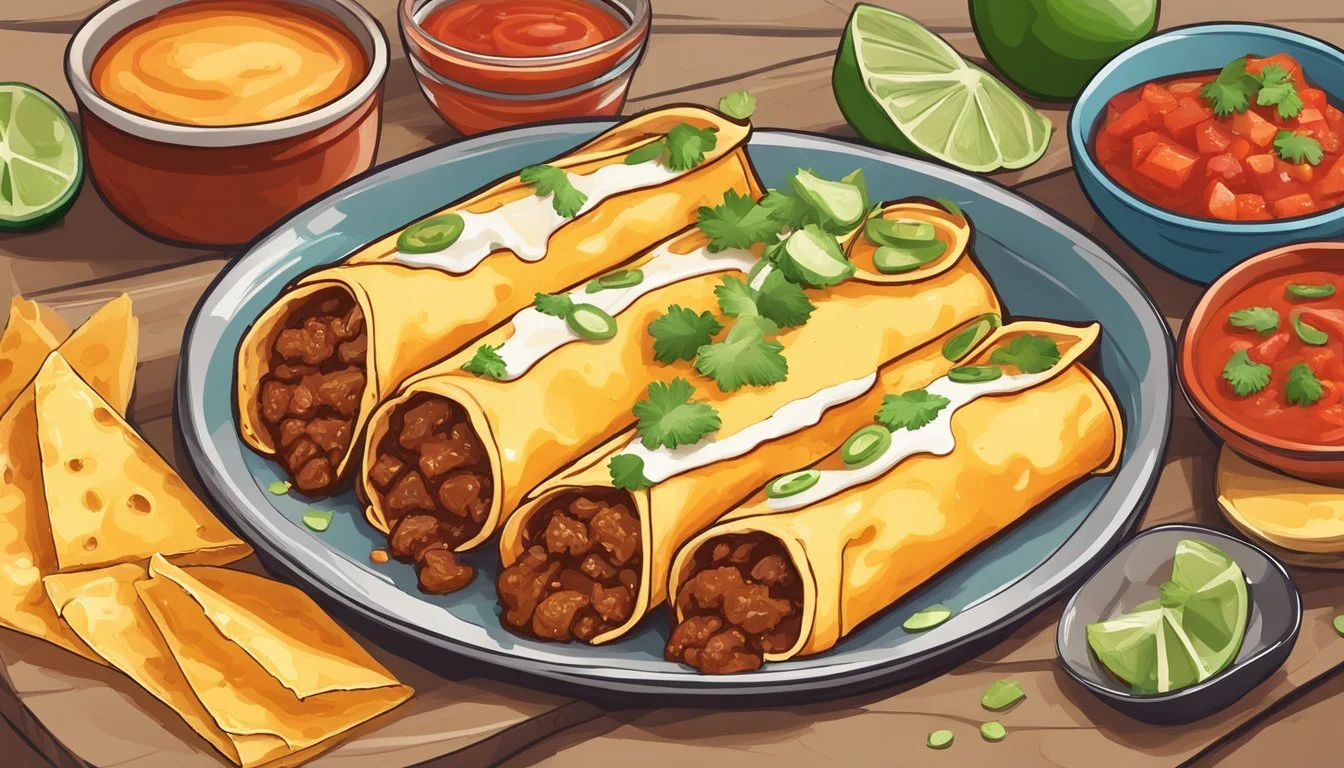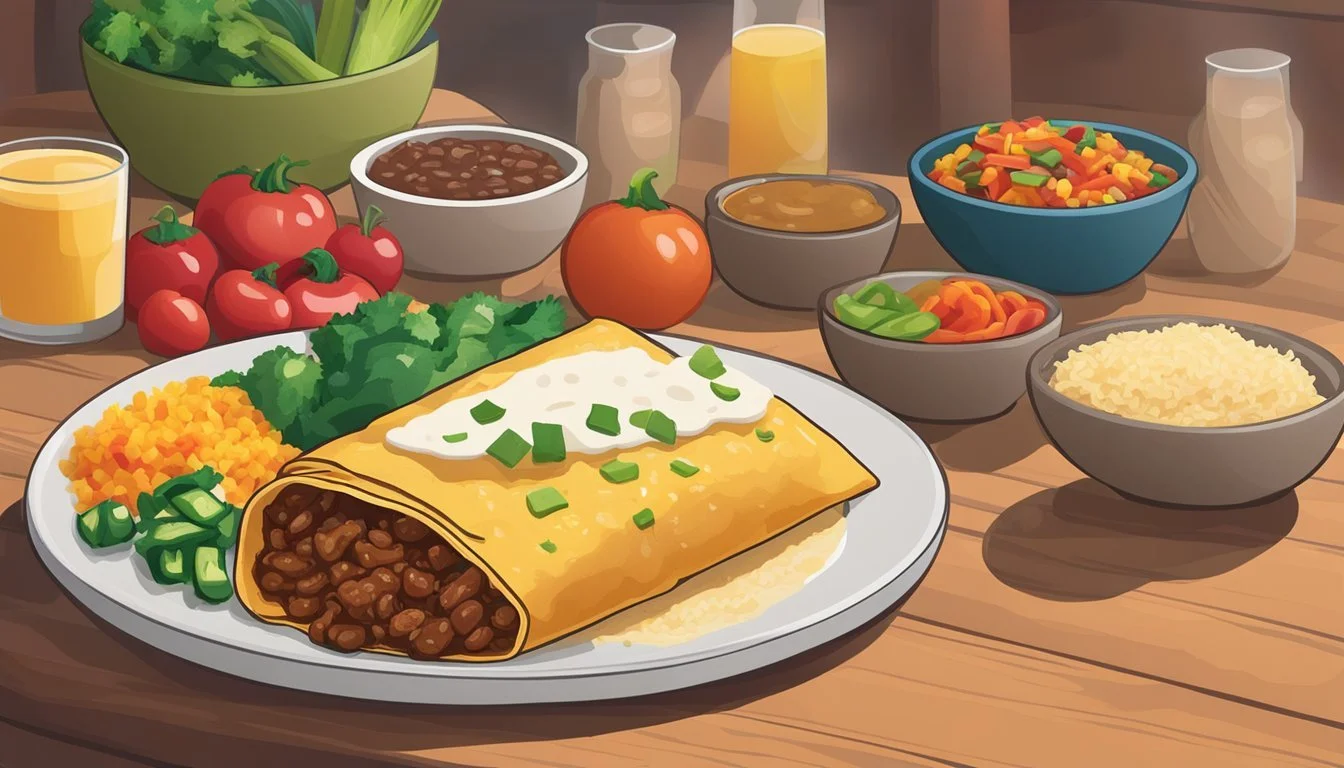How Long Do Beef Enchiladas Last?
Storage Tips and Shelf Life
Beef enchiladas are a beloved dish known for their rich flavors and satisfying textures. Whether you're planning to make them for a special occasion or preparing a batch for meal prep, understanding their storage life is crucial for maintaining their quality and safety. Beef enchiladas typically last 3 to 5 days in the refrigerator when stored properly in an airtight container.
For those looking to extend the shelf life of their enchiladas, freezing offers an excellent solution. When frozen, beef enchiladas can maintain their taste and texture for up to 3 to 4 months. This makes them a perfect candidate for batch cooking, enabling you to enjoy homemade meals with minimal effort on busy days.
Proper storage methods, such as using suitable baking dishes and ensuring the enchiladas cool completely before freezing, can make a significant difference in their longevity and quality. Following these tips will keep your beef enchiladas fresh and tasty, whether you're savoring them immediately or saving them for later.
Understanding Enchiladas
Enchiladas, a popular dish in Mexican cuisine, are cherished for their combination of tender meat, flavorful sauces, and a variety of cheeses. This section delves into the cultural significance and essential components of beef enchiladas.
Origins and Cultural Significance
Enchiladas trace their origins to indigenous civilizations in Mexico, where corn tortillas were used as a staple food. These tortillas were typically filled with beans, corn, or meat and topped with chili sauce.
The dish has deep roots in Mexican culture, symbolizing family gatherings, celebrations, and traditional culinary practices. Over time, enchiladas have been adapted to suit various tastes, but they remain a key element of Mexican cuisine, embodying rich flavors and history.
Components of Beef Enchiladas
Tortillas: Traditional enchiladas use corn tortillas, known for their distinct flavor and ability to hold fillings without falling apart. Flour tortillas are also used, providing a softer texture.
Meat and Filling: Ground beef is commonly seasoned with chili powder, cumin, and dried oregano. The meat is typically cooked with onions and garlic to enhance its flavor. Beans, corn, and green chilies are often added to the filling for added texture and taste.
Cheese: Monterey Jack and cheddar are popular choices. These cheeses melt well and complement the spicy flavors of the meat and sauce.
Sauce: Enchilada sauce, made from a blend of tomatoes, chilies, and spices, can be either store-bought or homemade. A homemade enchilada sauce often includes ground cinnamon, cornstarch for thickness, and a hint of garlic.
Each element works together to create the distinct layers of flavor and texture that make beef enchiladas a beloved dish.
Preparation Techniques
Creating perfect beef enchiladas involves careful preparation and assembly. Focus on selecting fresh ingredients and using the right techniques to ensure flavorful and satisfying results.
How to Make Beef Enchiladas
To make beef enchiladas, start with ground beef or lean ground beef. Heat a large skillet and add a teaspoon of oil. Sauté onions until soft, then add the beef and cook until browned. Be sure to break apart the meat with a spatula as it cooks. Drain any excess grease.
Next, season the beef with chili powder, cumin, paprika, and garlic. Stir in some enchilada sauce, diced tomatoes, and green chilies. For added flavor, incorporate black beans or other veggies like corn or jalapenos.
Combine shredded cheddar cheese and Monterey Jack cheese into the mixture. Once the filling is ready, let it cool slightly before assembling the enchiladas.
Best Practices for Assembling
Use corn tortillas for a traditional taste, or opt for flour tortillas if preferred. Warm the tortillas slightly to make them pliable. Spoon the beef mixture into each tortilla, then roll them tightly and place seam-side down in a baking dish.
Pour extra enchilada sauce over the rolled tortillas. Top with a generous layer of shredded cheddar cheese or Monterey Jack cheese. To enhance flavor, add sliced jalapenos, diced tomatoes, or a sprinkle of cilantro on top.
Cover the dish with aluminum foil and bake at 350°F for about 20 minutes. Remove the foil and bake for an additional 10 minutes until the cheese is melted and bubbly. Serve with sour cream and additional garnishes as desired.
Following these techniques ensures that beef enchiladas are perfectly prepared and delicious every time.
Storage Solutions
Proper storage can extend the shelf life of beef enchiladas, whether you're planning to eat them within the week or store them for longer in the freezer.
Refrigeration Details
Beef enchiladas, when stored correctly, can last in the refrigerator for up to five days. Use airtight containers or wrap each enchilada tightly with aluminum foil to prevent moisture loss and contamination. Label the container with the date to track freshness.
For an optimal layer of flavor retention, maintain the refrigerator temperature at or below 40°F (4°C). Consider storing enchilada components such as shredded beef, tortillas, and enchilada sauce separately and assembling just before reheating to preserve texture.
Freezing and Thawing Procedures
For longer storage, freeze enchiladas to maintain their quality for up to three months. Assemble the enchiladas in a freezer-friendly dish and cover tightly with aluminum foil. You can also wrap each enchilada individually to allow for easy single-serving options.
Thawing Tips: Transfer the enchiladas from the freezer to the refrigerator at least 24 hours before use. For faster thawing, use the microwave's defrost setting but ensure even heating. After thawing, reheat in an oven preheated to 350°F (175°C) for 20-25 minutes or until heated through.
Serving Suggestions
Beef enchiladas are a versatile and family-favorite dish. They shine best with well-paired accompaniments and creative variations to suit different tastes and occasions.
Accompaniments
Pair beef enchiladas with Mexican rice or cilantro lime rice to complement the rich and savory flavors. Refried beans or black beans add texture and protein.
Fresh salads with ingredients like red onion, tomatoes, and avocado offer a refreshing contrast. Toppings such as sour cream, guacamole, and pico de gallo enhance the dish's overall flavor.
Tortilla chips and salsa are excellent sides, providing a crunchy element. Sliced jalapenos and fresh cilantro bring an extra kick and freshness. These accompaniments create a well-rounded, satisfying meal.
Creative Variations
For a twist, consider using different cheeses like Monterey Jack or cheddar cheese. Adding vegetables such as bell peppers or zucchini can increase nutritional value.
Experiment with different enchilada sauces like green enchilada sauce instead of traditional red enchilada sauce. For a spicier version, include more cumin or chili powder in the beef mixture.
Pro tip: Incorporate shredded cheese inside the enchiladas before rolling them, ensuring a gooey, cheesy interior. Also, try adding avocado slices or a dollop of sour cream on top for a creamy finishing touch. This way, beef enchiladas can be customized to suit various preferences and culinary tastes.
Health and Nutrition
Beef enchiladas can be a delicious and nutritious meal. This section will explore the dietary considerations and the nutritional components of this dish.
Dietary Considerations
When preparing beef enchiladas, one should consider the dietary needs of those consuming the dish. For a balanced and healthy option, using lean ground beef can significantly reduce saturated fat.
Vegetarian options can be created by substituting beef with black beans or corn.
Adding a variety of toppings like sour cream or extra cheese can add to the flavor, but moderation is key to keep fat and calorie intake in check.
If dietary restrictions or preferences lean towards poultry, substituting with ground turkey or shredded chicken is another viable approach. For those monitoring sodium intake, opting for homemade enchilada sauce over store-bought can greatly reduce sodium content.
Nutritional Components
Beef enchiladas can provide a mix of essential nutrients. Ground beef is a valuable source of protein and iron, which are crucial for muscle repair and oxygen transport in blood, respectively.
Adding beans, such as black beans, introduces fiber and complex carbohydrates that aid in digestion and provide sustained energy.
Cheese gives a boost of calcium for bone health, whereas corn contributes a modest amount of vitamins and antioxidants.
Including onions and peppers not only enhances flavor but also adds beneficial vitamins and minerals like Vitamin C and potassium.
These enchiladas, when well-prepared, can offer a balanced meal, especially when paired with a side salad or other vegetables, making a nutritious dinner choice.
Common Questions
Discover frequently asked questions and troubleshooting tips related to the storage, preparation, and freezing of beef enchiladas.
FAQs
How long do beef enchiladas last in the refrigerator?
Beef enchiladas typically last 3-5 days in the refrigerator. It is important to store them in an airtight container to maintain freshness.
Can beef enchiladas be frozen?
Yes, beef enchiladas can be frozen for up to 3 months. To freeze enchiladas, use a suitable baking dish or casserole that is both freezer and oven-safe.
How should leftovers be reheated?
Leftovers can be reheated in the microwave or oven. When using a microwave, heat the enchiladas on medium power until heated through. When using an oven, cover with foil and bake at 350°F until warmed.
Is it okay to use store-bought enchilada sauce?
Yes, store-bought enchilada sauce is a convenient alternative to homemade sauce and works well in beef enchilada recipes.
What types of cheese are recommended?
Shredded Mexican cheese blends or Monterey Jack cheese are popular choices for beef enchiladas. They melt well and add a rich flavor.
Troubleshooting Tips
Enchiladas turned out soggy, what went wrong?
Soggy enchiladas can be a result of too much sauce or not enough baking time. Use a moderate amount of enchilada sauce and bake until the tortillas are slightly crispy.
How to prevent tortillas from breaking?
To prevent tortillas from breaking, lightly fry them in a bit of oil before rolling. This can make them more pliable and less likely to tear.
What if the enchiladas are too spicy?
If the enchiladas are too spicy, serve with a dollop of sour cream or extra cheese to balance the heat. You can also adjust the amount of jalapenos or hot sauce in future preparations.
Can I make enchiladas ahead of time?
Yes, enchiladas can be assembled ahead of time and stored in the refrigerator. Be sure to cover them well and bake when ready to serve.
How to avoid dry enchiladas?
To avoid dry enchiladas, ensure there is enough enchilada sauce and that they are covered while baking. This helps retain moisture and keep the filling tender.
Final Thoughts
When storing beef enchiladas, keeping them in an airtight container is essential. This method ensures they remain fresh for 3-5 days in the refrigerator. For longer storage, freezing is an option, extending their shelf life up to 3 months.
Reheating methods vary depending on preference.
Oven: Preheat to 350°F (175°C). Heat for 15-20 minutes.
Microwave: Heat on high for 2-3 minutes per enchilada.
Stovetop: Use a skillet over medium heat with a small amount of oil.
Always observe any changes in smell, texture, or appearance when reheating to ensure the enchiladas are safe to eat. If in doubt, it is better to discard them to avoid foodborne illnesses.
By following proper storage and reheating guidelines, beef enchiladas can be enjoyed over several days or even months, ensuring convenience and preventing waste.









